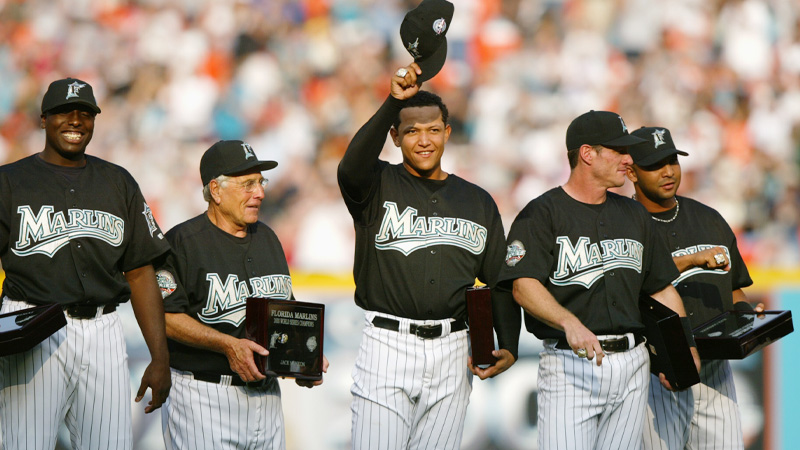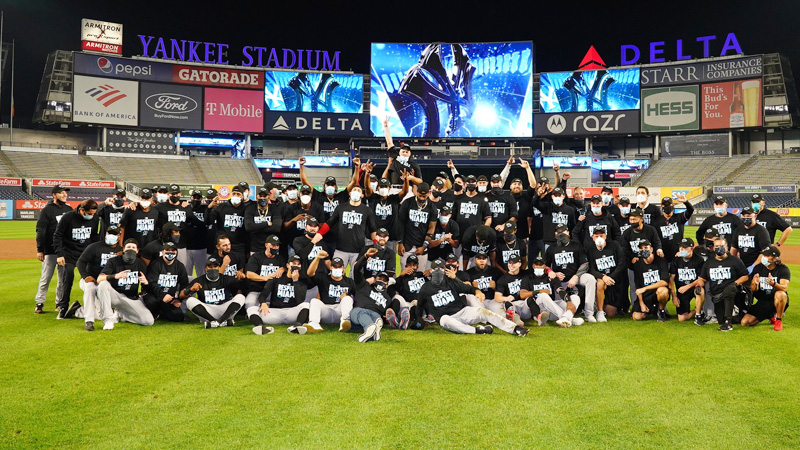The fascinating story of how the Florida Marlins transformed into the Miami Marlins. The rebranding of a sports team holds immense significance, representing a strategic shift in identity, connection to the community, and aspirations for success.
In this journey, we will explore the motivations behind the name change and delve into the vision of Jeffrey Loria, the team’s owner.
From the challenges of securing a new stadium to the quest for a stronger fan base, we will uncover the intricate details and controversies that shaped this transformative process.
Join us as we unravel the evolution of the Marlins and their deep-rooted connection to the vibrant city of Miami.
History of the Miami Marlins
The Miami Marlins have a relatively short but eventful history. Established in 1993 as an expansion team, originally known as the Florida Marlins, the franchise experienced both success and struggles.
They won two World Series titles in 1997 and 2003 but faced financial constraints and low attendance. Under new ownership, led by Jeffrey Loria, the team underwent a rebranding in 2012, changing its name to the Miami Marlins.
The rebranding coincided with the opening of Marlins Park, a new stadium in downtown Miami. Despite initial challenges, the Marlins have shown signs of improvement and have been building a promising roster in recent years.
Why Are Florida Marlins Now Miami Marlins?

Source: calltothepen
If you are a baseball fan, you might have noticed that the team formerly known as the Florida Marlins is now called the Miami Marlins. Why did they change their name and what does it mean for the franchise and the fans?
Here are some facts and insights to help you understand the story behind the name change
New Ownership and Vision
When Jeffrey Loria took ownership of the Florida Marlins in 2002, he had ambitious plans for the team. He envisioned constructing a new ballpark in downtown Miami as a way to revitalize the franchise.
Loria believed that a modern stadium in a more central location would attract more fans and generate higher revenues. To complement the new ballpark, he wanted to rebrand the team as the Miami Marlins, reflecting their connection to the city.
Loria saw the name change and the new stadium as a way to rejuvenate the team’s image and establish a stronger presence in Miami.
Reflecting the City’s Identity
Miami is renowned for its rich cultural diversity, particularly its vibrant Hispanic community. Jeffrey Loria recognized the importance of embracing and reflecting the city’s identity through the Marlins’ name change.
By rebranding as the Miami Marlins, Loria sought to strengthen the team’s ties to the local population and tap into the deep-rooted passion for baseball within the Hispanic community.
The new name was intended to resonate with the city’s residents and create a sense of pride and ownership among fans. Loria believed that aligning the team’s name with the cultural fabric of Miami would foster a stronger connection and support from the community.
Securing a New Stadium
One of the major hurdles that Jeffrey Loria encountered in his quest to build Marlins Park was securing public funding and land for the stadium’s construction.
By rebranding the team as the Miami Marlins, Loria aimed to establish a closer bond between the franchise and the city of Miami.
The name change was strategic, as it created a perception that the team was deeply rooted in the community and represented the city as a whole.
This connection, in turn, was intended to make it more favorable for Loria to negotiate with local politicians and gain public support for the project, ultimately facilitating the process of securing funding and land for the new stadium.
Building a New Fan Base
Jeffrey Loria saw the name change to the Miami Marlins as an opportunity to expand the team’s fan base in the city of Miami. By emphasizing the team’s ties to the local community, Loria aimed to cultivate a sense of local pride and engagement among fans.
The rebranding aimed to create a stronger connection between the team and the city, making the Marlins a point of local identity and a source of civic pride.
This strategy was designed to not only retain existing fans but also attract new supporters who felt a stronger affiliation with a team named after their city, ultimately increasing fan attendance and support for the franchise.
Marketing and Merchandising Opportunities
The name change from the Florida Marlins to the Miami Marlins opened up significant marketing and merchandising opportunities for the team.
With the new brand, the Marlins had the chance to create fresh logo designs, introduce new uniforms, and develop merchandise featuring the team’s new name and colors.
This rebranding strategy aimed to generate excitement among fans and capitalize on their desire to show support for the team.
By offering new and updated merchandise, the Marlins sought to boost revenue through increased sales and tap into the enthusiasm surrounding the team’s new identity as the Miami Marlins.
Boosting Popularity and Revenue
Jeffrey Loria anticipated that the name change to the Miami Marlins, coupled with the new ballpark, would have a positive impact on the team’s popularity and revenue.
By aligning the team directly with the city of Miami, Loria aimed to evoke a sense of local pride and strengthen the connection between the team and its fans.
He believed that this association would generate increased fan support and higher attendance at games. The boost in popularity and attendance, in turn, would enhance the team’s financial stability by increasing revenue from ticket sales, concessions, merchandise, and sponsorships, ensuring the long-term viability of the franchise.
FAQs
What were some of the controversies surrounding the construction of Marlins Park?
The controversies surrounding Marlins Park included opposition from taxpayers and environmentalists who opposed the use of public funds and land for the project.
Did the rebranding to the Miami Marlins have an immediate impact on fan attendance?
No, the rebranding did not immediately boost fan attendance. The team struggled with low attendance even after the name change and the opening of Marlins Park.
Were there any changes to the team’s logo and uniform after the rebranding?
Yes, after the rebranding, the Miami Marlins introduced a new logo, uniform, and color scheme, featuring orange, blue, yellow, and black.
Who was the first general manager of the Miami Marlins after the rebranding?
The first female general manager in MLB history, Kim Ng, was appointed as the general manager of the Miami Marlins in 2020.
What factors contributed to the Miami Marlins’ playoff appearance in 2020?
Despite a COVID-19 outbreak that affected 18 players and coaches, the Miami Marlins made the playoffs in 2020 due to their resilience, effective roster management, and strong performances from key players.
To Recap
The rebranding of the Florida Marlins to the Miami Marlins was a multi-faceted decision that aimed to achieve several goals.
It was driven by the vision of Jeffrey Loria, who sought to build a new ballpark in downtown Miami and create a stronger connection between the team and the city.
The name change reflected the team’s ties to the vibrant Hispanic community and aimed to cultivate local pride and engagement.
While the rebranding faced initial challenges and controversies, it provided marketing opportunities and the potential to boost popularity and revenue.
The long-term success of the Miami Marlins depends on continued efforts to connect with fans, build a competitive team, and enhance their presence in the Miami community.







